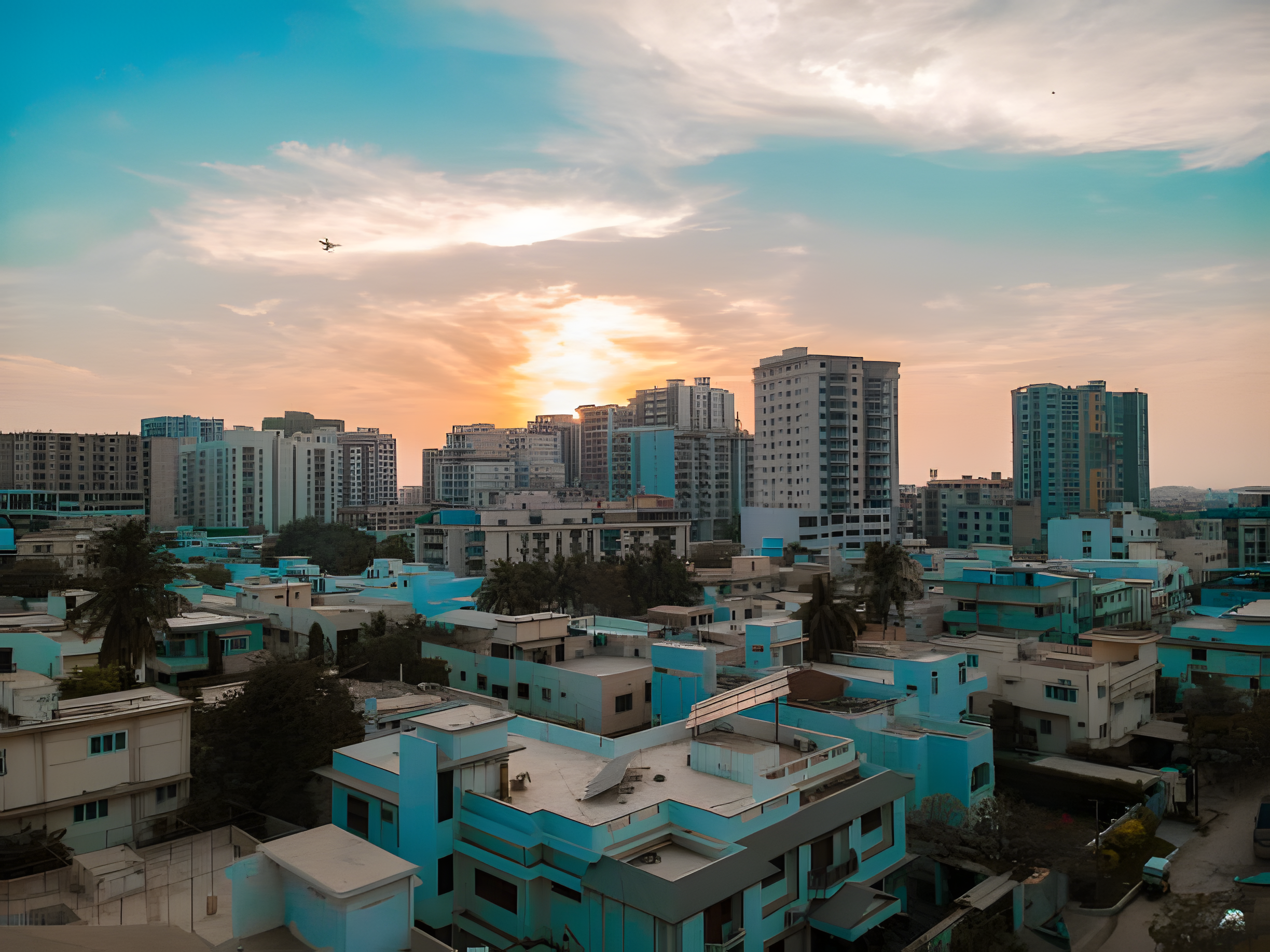
Cities around the world are facing a dual challenge of rapid urbanization and the impacts of climate change. As urban areas continue to grow in population and density, they become increasingly vulnerable to the effects of a changing climate. The interplay between urban densities and climate change is a critical issue that requires attention and action.
Urbanization has propelled most of the global population into cities, where 75% of energy use and 80% of greenhouse gas emissions are concentrated, leading to environmental shifts like deforestation, air pollution, and urban heat islands. Urban growth increases susceptibility to climate impacts, with rapid urbanization heightening vulnerability, notably in cities like Karachi, Pakistan. While cities face the pressing challenge of climate change, their adaptation lags due to the intricate nature of urban development. Projections suggest significant climate regime changes by 2050 globally, impacting season and weather patterns, underscoring the urgency for proactive climate resilience measures in urban settings.
Climate Resilience Challenges in Global South
Urban areas in the Global South, exemplified by Karachi, are poised to encounter notable temperature escalations akin to existing conditions in warmer regions. According to the Global Climate Risk Index 2021, Pakistan ranks as the eighth most vulnerable country in the world. Specifically, its southern province of Sindh stands out as one of the most susceptible regions to climate change in South Asia. A recent study by the Karachi Urban Lab, entitled “Designed to Fail? Heat Governance in Urban South Asia: The Case of Karachi,” exposed the substantial temperature surge witnessed by the port city in the last six decades. The research unveiled a noteworthy increase of 2.4°C in nighttime temperatures and a 1.6°C rise in daytime temperatures in Karachi. These temperature spikes surpass the global average temperature variations in the corresponding period. The study findings illuminate the critical issue of heat governance in Pakistan’s largest city, underscoring the urgency for effective strategies to alleviate the adverse repercussions of rising temperatures in urban South Asia.
Climate Risks in Urban Pakistan – Karachi
Urban centers in Pakistan have faced a series of climate-related challenges, including devastating heatwaves, rising temperatures, intense rainfall, and urban flooding, significantly impacting its residents and infrastructures. The city has grappled with deadly heat waves in 2015, with temperatures surpassing 45°C during summers, leading to heat-related illnesses and fatalities, particularly affecting vulnerable communities. The urban heat island effect, compounded by high population densities and limited green spaces, exacerbates the severity of heatwaves. As temperatures continue to climb, Karachi witnesses hotter and prolonged summers, posing health risks and escalating heat stress, attributed to urban development practices like dense populations and scarce green areas. Moreover, heavy rainfall events, common in Karachi, especially during the monsoon season, trigger urban flooding and waterlogging in low-lying regions due to insufficient drainage systems and encroachment on natural water bodies. The city’s rapid and haphazard urbanization has diminished permeable surfaces, amplifying surface runoff and heightening flood vulnerabilities.
Karachi’s Density and Climate Change – Complex Scenario
In Karachi, the intricate interplay between urban densities and climate change presents a multifaceted and formidable challenge. The density of urban areas significantly influences their resilience towards climate change, with varying impacts on adaptation capabilities. According to popular discourse, higher urban densities can enhance climate resilience by reducing per capita energy consumption and greenhouse gas emissions. At the same time, high-density urban areas encounter challenges like the urban heat island effect, leading to elevated temperatures and heightened heat-related risks, along with increased vulnerability to flooding due to limited green spaces and intensified surface runoff.
As one of the world’s largest and fastest-growing cities, Karachi faces significant urbanization pressures that impact its resilience to climate change. The city’s escalating population density, already reaching 30 million in 2024, with many higher density pockets bringing forth a host of climate-related issues. Uncontrolled urban expansion in Karachi has led to the depletion of green spaces, ecological destruction, and environmental pollution, straining infrastructure, and heightening vulnerability to climate-related disasters.
It is evident that urban centers’ vulnerability to climate challenges stems from unchecked urban expansion, depleting green spaces, encroaching on natural drainage systems, and fostering impermeable surfaces, intensifying urban heat island effects and flood risks. Addressing these issues demands climate-resilient strategies such as bolstering drainage systems, promoting green initiatives, advocating sustainable urban planning, and enhancing community involvement and awareness to bolster Karachi’s climate resilience and mitigate future climate-related challenges.

